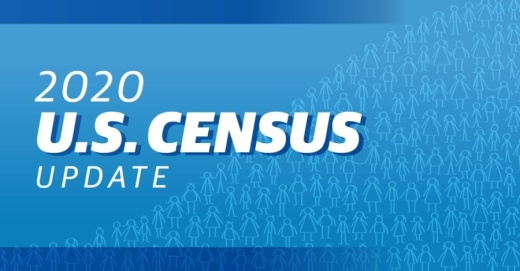Brazoria County saw a 64.1% self-response rate, while in Galveston County, the rate was slightly lower, at 60.6%. Harris County was between the two, with a 62.9% response rate.
In all three counties, about half of respondents did so via the internet: 53.5% and 50.3% of residents were considered internet respondents in Brazoria and Galveston counties, respectively. In Harris County, 54% of residents responded via the internet.
The census response rate in Galveston County has increased from the 58.6% self-response rate in 2010, while Brazoria and Harris counties saw slightly higher self-response percentages in 2010—65.4% for Brazoria County and 65.1% for Harris County.
At the city level, Houston’s census self-response rate in 2020 was 58.9%. Several Bay Area cities closed out the 2020 data collection period with self-response rates of 70% or higher, including League City, at 72.6%, and Clear Lake Shores, at 70.2%. The 2020 self-response rate in Nassau Bay was 62.5%.
Roughly three quarters of Pearland and Friendswood residents responded to the 2020 census. Responses were received from 74.3% of Pearland residents and from 79.4% of Friendswood residents.
Sarah Greer Osborne, communications and media relations director for the city of League City, told Community Impact Newspaper in April the city actively communicated census information via its official Facebook page and heavily pushed community participation. The April e-edition of City Matters magazine contained census-focused information for its 10,000-plus subscribers, she said.
“Now, more than ever, filling out the census is important,” she said in April.
Responses for the census are taken every 10 years, as is required by the U.S. Constitution. The census helps determine the allocation of billions of dollars in federal funds to local communities for schools, roads and other public services. It also dictates the number of seats each state has in Congress and other levels of government.
Data collection was set to continue through the end of October, but the Supreme Court ruled Oct. 13 to end the process 15 days early. The announcement came after the court approved the White House administration’s emergency request to halt the census at 11:59 p.m. Oct. 15.
Justice Sonia Sotomayor was the only one to dissent, writing that “the harms caused by rushing this year’s census count are irreparable. And respondents will suffer their lasting impact for at least the next 10 years.”
According to an August lower court ruling, the deadline for all responses was Oct. 31. Results must be reported to the president by Dec. 31, according to the U.S. Census Bureau.





